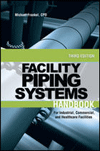ASA News
Students mixing digital and traditional means to evaluate distribution career opportunities

Image courtesy of ASA
Recently, ASA held a webinar that included a panel discussion of Texas A&M University Industrial Distribution students and graduates. The purpose of the webinar was to allow ASA members to hear directly from students and graduates about their processes and preferences when considering career opportunities.
Throughout the discussion, it became clear from the students’ remarks they balance both digital and traditional recruitment efforts from companies as they evaluate career opportunities.
Regardless of the method, getting a clear picture of a company’s culture was a resounding priority among panelists. The word “culture” was used repeatedly throughout the 40-minute discussion.
“If a company is prioritizing their culture and their approach to career development, that is huge for me,” says Dianna Serrano, a senior at Texas A&M University studying industrial distribution.
The panelists also spoke about a company’s community involvement and its support of employees. Anum Tariq, a Texas A&M University senior adds: “Culture is something that I really look for. How involved the company is and how they are supporting their people.”
Another key point made by the panelists was the importance of the candidate experience. They mentioned that communication and consideration throughout the entire recruitment process are imperative. They believe that how a company treats a candidate is a direct reflection of how they may be treated as an employee.
“I hear my peers say they're discouraged because they haven't heard back from a company in weeks,” Serrano adds. “They're like, ‘They don't really want me.’ If they do get hired, maybe I was the last choice when that was not the case. So, I think that being proactive through the process is important.”
Digital presence is critical
As expected, the students and graduates spoke about the importance of a company’s website and online presence during their recruitment research.
“Websites are important in this day and age with our generation. That’s the first thing we look at,” Tariq adds.
“Companies that have a good presence on the internet, their website is clean and very organized, are the ones I want to go talk to more than a company whose website is very hard to navigate or hard to see what's going on,” says Thomas Cooper, a recent Texas A&M University graduate.
Other panelists agreed. “How much of your information can I get from your website, including company culture, objectives, values, is important,” according to Texas A&M University graduate Joseph Romero.
Serrano adds: “When I'm looking for a company, I use their career website to learn and to know what exactly I am applying for and what exactly the job would entail. It's very important not only for the website to be easy to navigate, but for career postings to be as detailed as possible.”
In addition to a company’s website, the panelists also discussed how they use social media to explore companies they may have interest in.
“It’s not just the website, but if I go look you up on LinkedIn, I want to see if you've been to trade shows or if you're promoting your employees, things like that,” Romero says.
Sarah Pierce, another Texas A&M University student says: “Just being as transparent as possible with social media is good. I like seeing what companies are doing, if they're celebrating something, and what their employees are posting.”
Traditional recruitment still plays a role
While online resources certainly help in the job-search process, the students were very clear that a holistic recruitment approach from companies that include both digital tools and traditional tactics is a must.
“For companies that really want to showcase their culture and want to attract young talent, I would say get involved in universities because that's how we, as students, have a way to look for jobs and get connected with companies,” Tariq says. “Companies that are connected with universities and willing to come to classrooms or host lunches for students can really demonstrate their culture and the type of people they’re looking for.
“The main thing I used was career expos and career fairs. Using those career fairs and talking to those recruiters was the biggest thing when I was looking for a job and learning about the environment that I was going to be working in (cooper).”
Equally as important as involvement with a particular university, community college, trade school or high school, is the people who represent the company during the recruitment process, according to the students.
“I've met a lot of people at the career fair who are very personable, and they make you very comfortable because a lot of times when you're recruiting at a college, a lot of students have never had the opportunity to talk to a professional,” Serrano says.
Pierce shared an experience she had with a particular company that had an impact on her. “They showed up at the career fair and found interest in me. They reached out and we met at dinner with a couple of representatives from the company and then they followed with an in-person interview. I think that made a huge difference,” she explains.
Next steps for ASA members
Below are some areas mentioned in a previously published ASA article members may want to consider to improve their recruitment.
1. Employer Brand
In traditional corporate branding, an organization’s brand is the essence of the value it provides customers. Employer branding is the same concept, but the objective is to convey and influence a company’s reputation as an employer and its value to current and potential employees. The goal of employer branding is to position a company as a fulfilling place to work for prospective employees.
An employer brand can help attract the type of candidates a company desires and ideally positions it ahead of the competition. Companies that invest in employer branding are more likely to attract candidates who not only have the right skills and experience but fit best with a company’s culture and values. Employer branding also gives businesses the ability to compete for jobseekers on more than just compensation.
2. Online presence
A company’s online presence is paramount as eight out of every 10 job searches begin online. Information about a company’s culture, employee testimonials and a straightforward application process are all table stakes in today’s recruitment environment. Not only must a company’s careers website include these elements, but a firm’s social media presence should be consistent and include the same content. ASA has created a checklist to assist members with ensuring their online presence is meeting the needs of job seekers. This checklist can be found on the ASA Recruiter Toolbox, available only to members.
3. Local community colleges, trade schools and high schools
Given the increase in community college enrollment and interest in the trades, now is the time to create or improve relationships with local community colleges, trade schools and high schools. Most offer job fairs and often look for class speakers and experts. You can find local community colleges with trade programs here and local trade schools here.
4. Polish your candidate messaging
ASA recently conducted market research among job seekers to best understand what messaging about opportunities within the PHCP/PVF industry most resonates with them. For students, be it high school, trade school, community college or university, messages that reinforce stability, growth and development, meaningful work, and opportunities for a wide range of skillsets are desired. ASA members can find specific, ready-to-use messages to incorporate into local recruitment materials on the ASA Recruiter Toolbox under “Recruitment Resources.”
You can view a recording of this webinar that is posted on ASA Recruiter Toolbox found at recruitertoolbox.asa.net and by clicking on Recruitment Resources > Project Talent Webinars. A valid ASA member login is required.
Project Talent is one of four mega goals included in the Association’s strategic plan. This goal includes the objective of developing and implementing a program to attract and grow the number of talented workers taking advantage of fulfilling career opportunities in the PHCP/PVF industry.
Looking for a reprint of this article?
From high-res PDFs to custom plaques, order your copy today!









